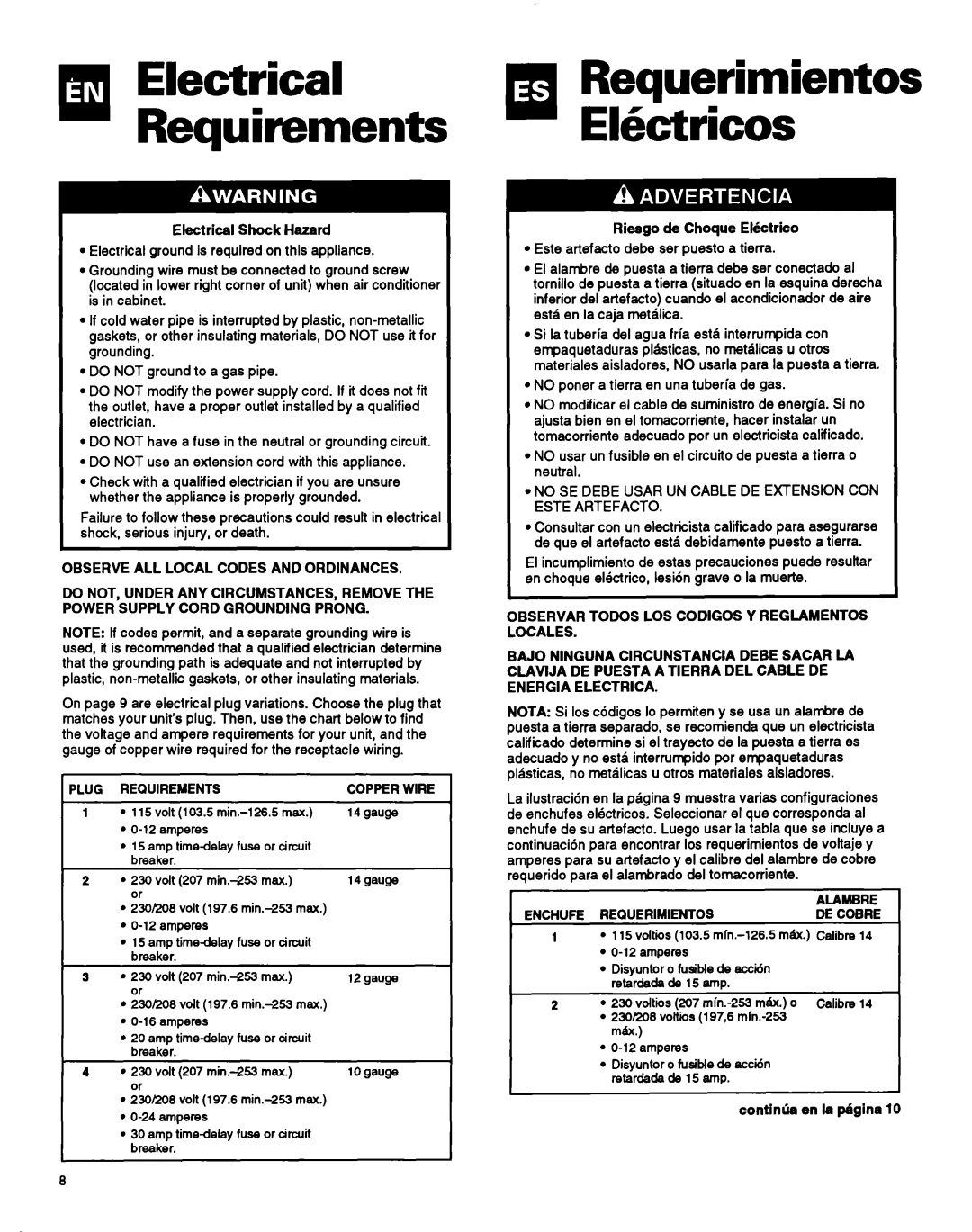ACM184XA0 specifications
The Whirlpool ACM184XA0 is a sophisticated kitchen appliance designed to enhance cooking efficiency and versatility. Built with modern technology and a sleek design, this appliance stands out for its innovative features.At the core of the ACM184XA0 is a high-performance induction cooking system that offers rapid cooking times and precise temperature control. Induction cooking heats up cookware directly through electromagnetic energy, ensuring that heat is generated only when suitable cookware is placed on the surface. This significantly reduces cooking time, making it a perfect option for busy households.
One of the notable features of the Whirlpool ACM184XA0 is its intuitive touch control panel, which provides easy access to a range of cooking functions. Whether you're simmering sauces, frying, or boiling, the interface allows for quick adjustments to settings with a simple touch. The appliance also includes multiple cooking zones, each with varying power levels, accommodating pots and pans of different sizes.
Safety is a primary consideration in the design of the ACM184XA0. The appliance is equipped with features such as auto shut-off and pan detection, which ensures that the induction element is only activated when suitable cookware is present. This not only prevents accidents but also enhances energy efficiency, making the cooking process more environmentally friendly.
In addition to its performance features, the Whirlpool ACM184XA0 boasts a sleek, modern aesthetic that fits seamlessly into any kitchen décor. Its minimalist design, complemented by a smooth glass surface, is not only visually appealing but also simplifies cleaning.
This induction cooktop also incorporates an innovative heat control feature, allowing users to maintain a steady temperature, which is ideal for melting chocolate or preparing delicate sauces. Furthermore, the appliance's rapid heat-up function ensures that cooking is not only efficient but also enjoyable.
With its combination of advanced technology, user-friendly controls, and stylish design, the Whirlpool ACM184XA0 is ideal for both novice cooks and seasoned chefs. It embodies the perfect blend of functionality and aesthetics, making it a valuable addition to any modern kitchen. Whether you're whipping up a weekday dinner or hosting a weekend gathering, this induction cooktop is designed to meet all cooking needs with ease.

